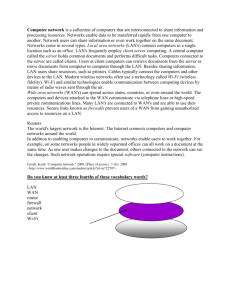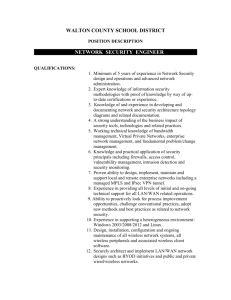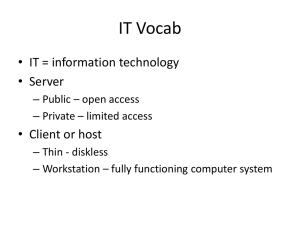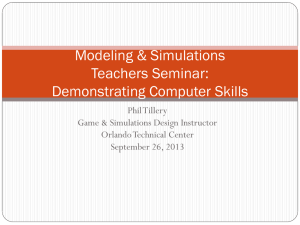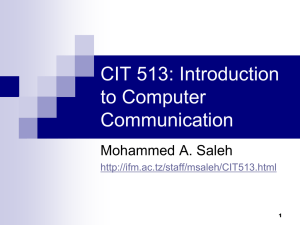The Effects of Information Technology Project Complexity on Group
advertisement
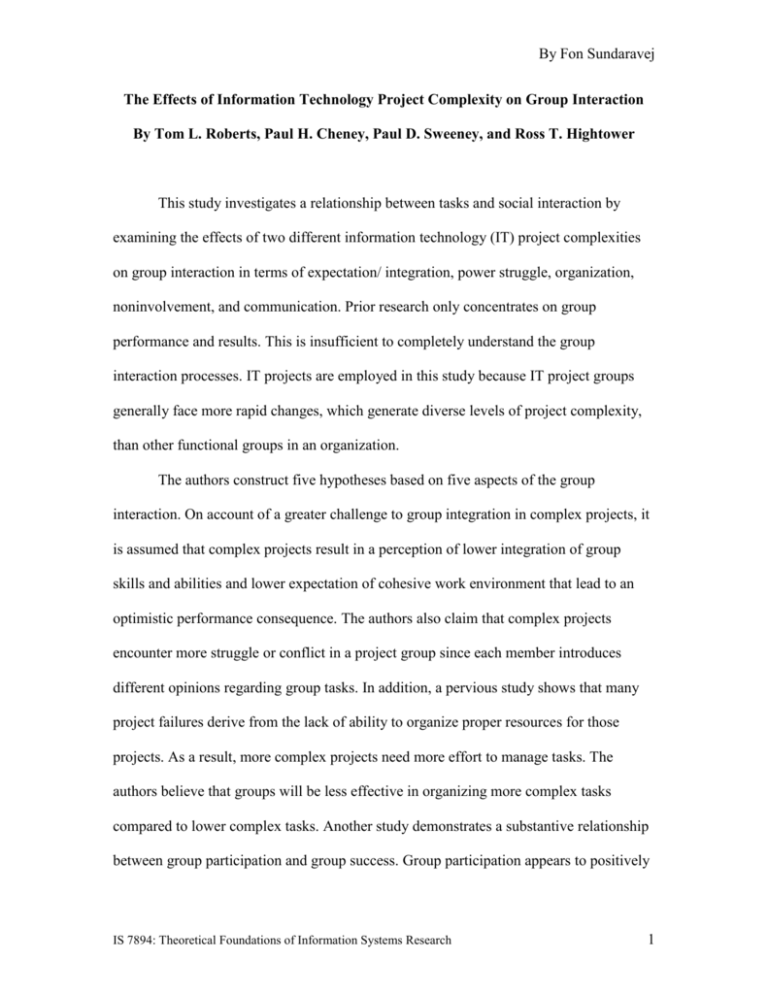
By Fon Sundaravej The Effects of Information Technology Project Complexity on Group Interaction By Tom L. Roberts, Paul H. Cheney, Paul D. Sweeney, and Ross T. Hightower This study investigates a relationship between tasks and social interaction by examining the effects of two different information technology (IT) project complexities on group interaction in terms of expectation/ integration, power struggle, organization, noninvolvement, and communication. Prior research only concentrates on group performance and results. This is insufficient to completely understand the group interaction processes. IT projects are employed in this study because IT project groups generally face more rapid changes, which generate diverse levels of project complexity, than other functional groups in an organization. The authors construct five hypotheses based on five aspects of the group interaction. On account of a greater challenge to group integration in complex projects, it is assumed that complex projects result in a perception of lower integration of group skills and abilities and lower expectation of cohesive work environment that lead to an optimistic performance consequence. The authors also claim that complex projects encounter more struggle or conflict in a project group since each member introduces different opinions regarding group tasks. In addition, a pervious study shows that many project failures derive from the lack of ability to organize proper resources for those projects. As a result, more complex projects need more effort to manage tasks. The authors believe that groups will be less effective in organizing more complex tasks compared to lower complex tasks. Another study demonstrates a substantive relationship between group participation and group success. Group participation appears to positively IS 7894: Theoretical Foundations of Information Systems Research 1 By Fon Sundaravej affect group performance. Accordingly, successful project completion requires an excessive involvement of all group members. The authors draw a presumption that complex projects tend to have higher degrees of member noninvolvement. Finally, several studies confirm an association of project succeeds and effective communication among group members. The last hypothesis infers that the more complex the group project, the lower the level of group communication. The task complexity is used as a treatment variable. This case study divides the task complexity into highly and moderately complex. LAN and WAN projects are considered as highly complex, whereas a HTML project is moderately complex. The complexity of these three projects is classified by the number of tasks and subtasks required to complete each project. An analysis of variance (ANOVA) appears no significant difference in complexity between LAN and WAN projects but demonstrates more complexity in LAN and WAN projects than HTML project. ANOVA also shows no significant effect in the order of the three projects. For this study, the data are collected from a hundred senior management information systems (MIS) students by assuming that they have the same levels of knowledge, skills, experience, and abilities as entry-level IS position. Individual course experience, which is the technical skill level each group member acquires previously, is used as a control variable. To indicate that the individual course experience does not influence the project group interaction processes, each student has to complete the same number of MIS courses prior to participation in this project and has to meet the same rate of current knowledge in HTML, LAN, and WAN projects. ANOVA presents no significant difference in the amount of knowledge that students bring to each project. IS 7894: Theoretical Foundations of Information Systems Research 2 By Fon Sundaravej The initial hierarchical linear modeling (HLM) is used to estimate and test effects involving multiple variables (expectation/ integration, power struggle, organization, noninvolvement, and communication and participation) that are measured at several levels. This procedure is conducted to determine the validity of ANOVA results. The factor analysis results prove that all components of group interaction are applicable. ANOVA and Tukey HSD are used to analyze the data. The result of the study indicates that the HTML project produces higher ratings for integration/ expectation, organization, and communication/ participation, but similar ratings for power struggle and noninvolvement as the LAN and WAN projects. This finding can be interpreted that the moderately complex technical project generates higher group process components of integration and expectation, organization, and communication and participation than the highly complex technical project. Groups increase more expectation and integration, manage more effective tasks, and report more frequent communication from less complex projects. However, projects with any complexity encounter problems in both power struggles and member noninvolvement. Such findings reveal the effect of IT project complexity on group interaction. In the future, the methodology of this study may apply to the same type of project with different complexities. That means, instead of measuring project difficulty between HTML and LAN or WAN projects from the assigned number of tasks, we could apply the same methodology to only the HTML project but distinguish the project into different degrees of complexity such as basic, intermediate, and advanced HTML. By doing so, we can make sure that the individual course experience of each participant is a truly strict controlled variable for the study. IS 7894: Theoretical Foundations of Information Systems Research 3

